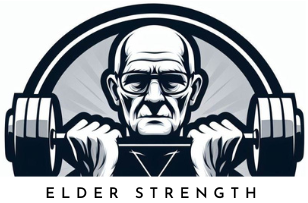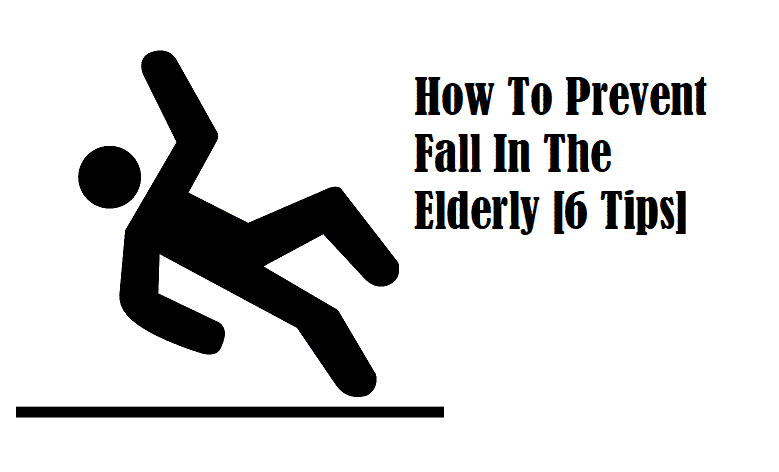Fall injuries are a very common cause of hospitalization for seniors. In this post, you will learn how to prevent falls in the elderly.
There are several factors that make us prone to falls as we get older. Our balance, coordination, and leg strength deteriorate. Which makes it both easier to slip and harder to maintain balance once that happens.
Fortunately, there are many things you can do to prevent falling. Of course, falls can’t be completely prevented as thousands of people of all ages slip and fall every day, but you can lower your risk of falling with a few simple things.
The first and most important thing is to build and maintain leg and core strength. These will help you keep your balance in case of slipping. Muscle mass and bone strength also make your body stronger so in the case you fall, your likelihood of suffering significant injuries is smaller.
Preventing falls is extremely important for the elderly because as we get older our bodies become more fragile and a simple fall can cause serious injuries that require surgery and hospitalization.
There are also specific fall prevention exercises for seniors you can do to reduce your risk of falling.
With these tips, you will learn to do your best to prevent falling.
How To Prevent Falls In The Elderly
1. Improving Leg Strength With Resistance Training
Balance and coordination protect you against falls because they help you stay on your feet in case you slip or stumble. What many don’t realize is that balance and coordination are dependent on strength of the muscles involved.
When your center of gravity is compromised, your central nervous system starts to fire like crazy to activate all the necessary muscles to achieve a body position where you can maintain balance and avoid falling.
Unfortunately, weak muscles, especially in the legs, can prevent this automated self-preservation process from completing.
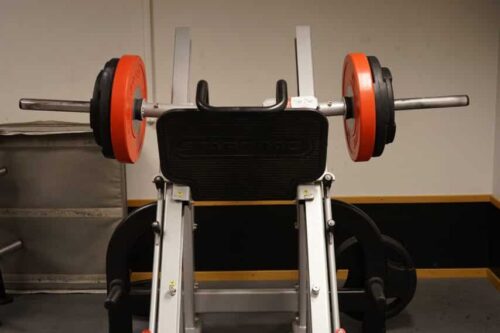
Even if your nervous system gives all the right commands for achieving balance it won’t matter if your limbs are not doing their part, which is to get to the right position fast and be able to support your weight in a less than ideal position.
That’s why it’s extremely important to maintain and improve your strength as you grow older, especially in the legs. You shouldn’t leave it on the legs only. Your core is especially important for improving and maintaining balance and you instinctively spread your arms to find balance in case of slipping. It’s useful to have strong and fast muscles in the whole body to avoid falling.
The other important function strength training provides is increased muscle mass and tougher bones and ligaments. The added muscle mass protects you in case you do lose balance and fall. Naturally stronger bones and ligaments can take a harder hit without suffering a significant injury.
As you can see, strength training is very beneficial for preventing falls. You can read more about improving your strength with strength training in the articles:
- Weak Legs On Seniors
- Benefits Of Strength Training For Seniors [Complete Guide]
- Core Strength Exercises For Seniors
- Sit-Ups For Seniors
2. Improving Mobility
Unfortunately having strong muscles won’t save you in case of stumbling if you can’t get your legs where they need to be to prevent the fall.
That’s why it’s important to improve your mobility as well as strength. The great thing about doing full range of motion strength training is that it improves mobility as well.
You should still include some stretching and other mobility work in your routine to improve your mobility further and avoid pulled muscles.
Strength training is also important for improving active mobility. You see, there is active and passive mobility. Passive mobility means the range of motion you can comfortably extend a joint.
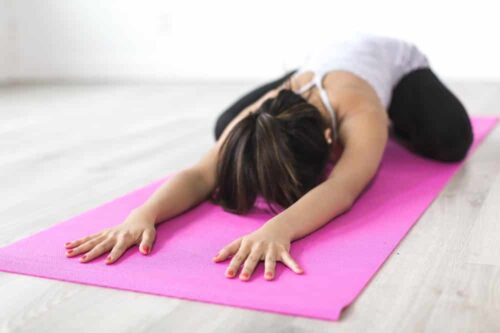
This range of motion is often higher than the range of motion of active mobility, which means the range of motion where you can produce a force on the joint.
In case of preventing falling it’s important to be able to resist the force of the weight of your body in a potentially awkward position with your legs.
The better your active mobility and strength are, the further away from that awkward position where you can still maintain balance is. Things like yoga are great for both passive and active mobility.
You can learn more about mobility exercises in the articles:
- Hamstring Stretches For Seniors [Quick Guide]
- Best Stretches For Seniors and The Elderly [Two Tips]
- 4 Simple Hip Stretches For Seniors
- Ankle Exercises For Seniors
3. Improving Balance
Strength and mobility are physical traits that are required for good balance. Balance itself is a skill that needs the practice to improve and maintain.
To prevent falls it’s important to do exercises that improve balance as we get older. Balance is essentially the combination of muscle control and coordination of all your senses that affect balance. These include your eyes, inner ear, and proprioception of your whole body.
Doing exercises that challenge your balance teaches all these senses to function better together. Without exercise that challenges our balance no amount of strength and mobility will save you from falling in case of slipping.
Balance can be practiced with specific exercises or by doing activities that challenge your balance. Good examples of these kinds of activities are dancing, trail walking, skating, and skiing. Check out these fun balance exercises for seniors!
Specific exercises include doing one-leg stands, lunges, and using a balance board. Anything that challenges your balance on a daily basis is useful for preventing falls.
4. How To Prevent Falls In The Elderly Instantly: Footwear
Besides physically improving your balance and strength there are other things that can help you prevent falling. The most important thing is high-quality footwear. They can literally prevent falls the moment you put them on your feet.
Buying good shoes is never a bad investment. When choosing shoes for seniors it is especially important to make sure the soles are not slippery. Smooth leather and wood soles can seem and feel classy but they can be dangerously slippery.
Always choose shoes with soft rubber soles and some texture that provides additional grip. It’s also important the shoes are a perfect fit for your feet.
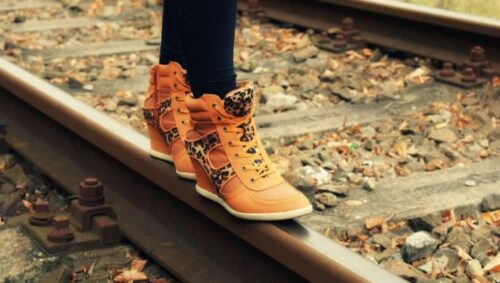
A shoe that is too loose can throw you off balance or catch an obstacle on the ground for example. Too tight shoes will feel uncomfortable and can make your balance worse because of this.
If the arch support and wideness are not correct for you the shoe will feel awkward and can throw you off balance as well so always buy shoes that fit your feet. No matter how nice the shoes look if they don’t fit your feet leave them on the shelf.
I’m sure I don’t have to even mention high heels…
If you live in a cold climate it’s even more important to have good stable shoes during the winter months. Shoes equipped with snow studs or separate snow grips are great for the outdoors. They can be dangerously slippery inside on a stone floor so always choose your footwear wisely.
If you have slippery floors at home and have problems with balance and stability it might be wise to use anti-slip socks to make moving around at home a bit safer and more comfortable without having to carpet the whole floor.
Learn more about high-quality footwear:
- Best Running Shoes for Seniors [Simple Guide]
- Best walking shoes for seniors 2020
- Adaptive Shoes For the Elderly [Simple Guide]
5. Using Supports
Finally, if you have disabilities or illnesses that prevent you from improving your strength and balance or limit your mobility, you should consult a professional for using walking supports.
Proper walking support can improve your ability to move around safely immensely. A simple walking stick or a cane can offer the support you need to move around confidently. If you need more support there are things like rollators, tri walkers, and wheeled walkers.
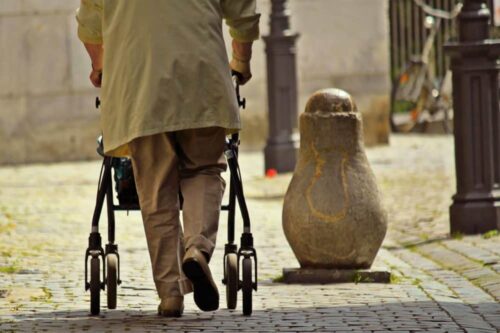
If you need to use walking support you should feel no shame about it. The only shameful thing to do is to avoid independent activity and limit your freedom because you don’t like the idea of a walking support and can’t move safely without one.
Walking with support is great exercise and in some cases, it can even improve your ability to move to the point that you don’t need support.
So if you feel like you might need support, don’t hesitate to contact your local medical professional. It’s important to choose proper support with a professional and go over its functions and safety.
6. Fall Proofing Your Home
Finally, it can help a lot in fall prevention to make your home fall-proof. Well, it’s of course impossible to make your home completely fall-proof and safe, but you can do a lot with simple home improvements.
These home improvements include things like making floors non-slippery and clutter-free. Having grab-bars in places where there’s a higher risk of falling, like in the bathrooms and stairs, etc.
The idea is to make everything as easily accessible and to prevent the risks of stumbling or slipping so that the place where you spend most of your time is safe to move around.
Conclusion
We hope you found these tips for preventing falls in the elderly useful and will apply them yourself! If you have any questions, don’t hesitate to ask in the comments section below.
Taking care of your strength, mobility and balance are crucial for preventing falls as we grow older. Using high-quality footwear that’s appropriate to the weather is another part of the puzzle to avoiding falls.
It’s also important to pay attention to accessibility and removing dangerous obstacles in your home and everyday environment.
We hope you can avoid falls by applying these tips and wish you a balanced (pun intended) day!
If you like reading about strength training and general health tips for seniors, please bookmark our site and subscribe to our newsletter.
See you next time!
Elder Strength
